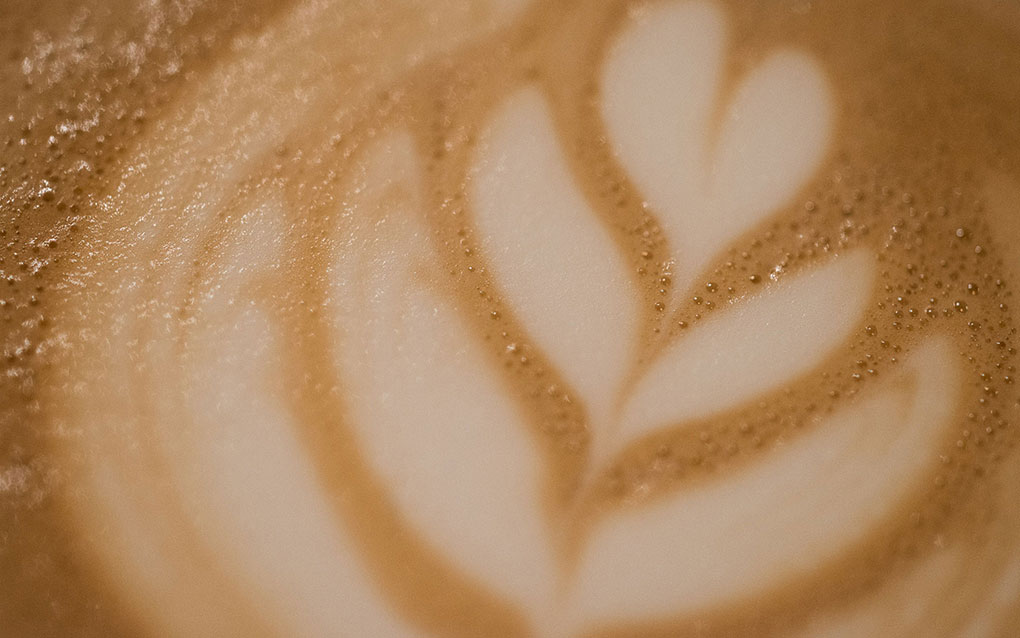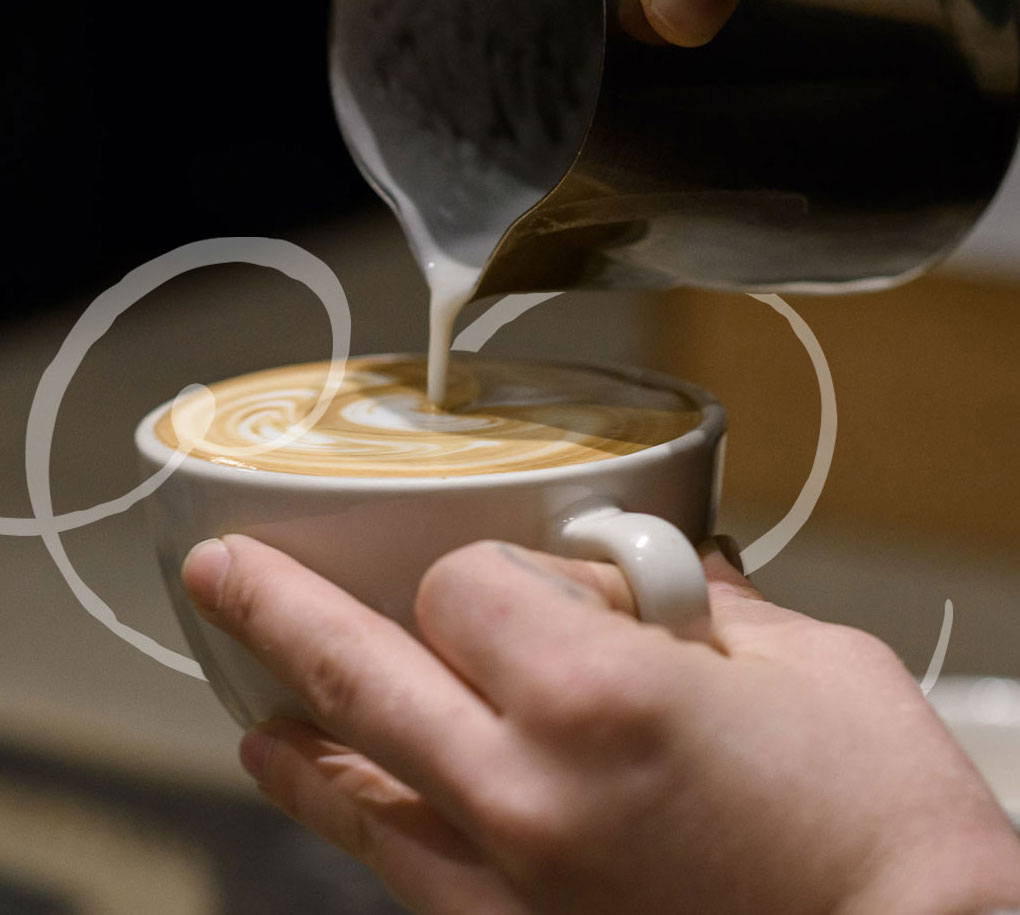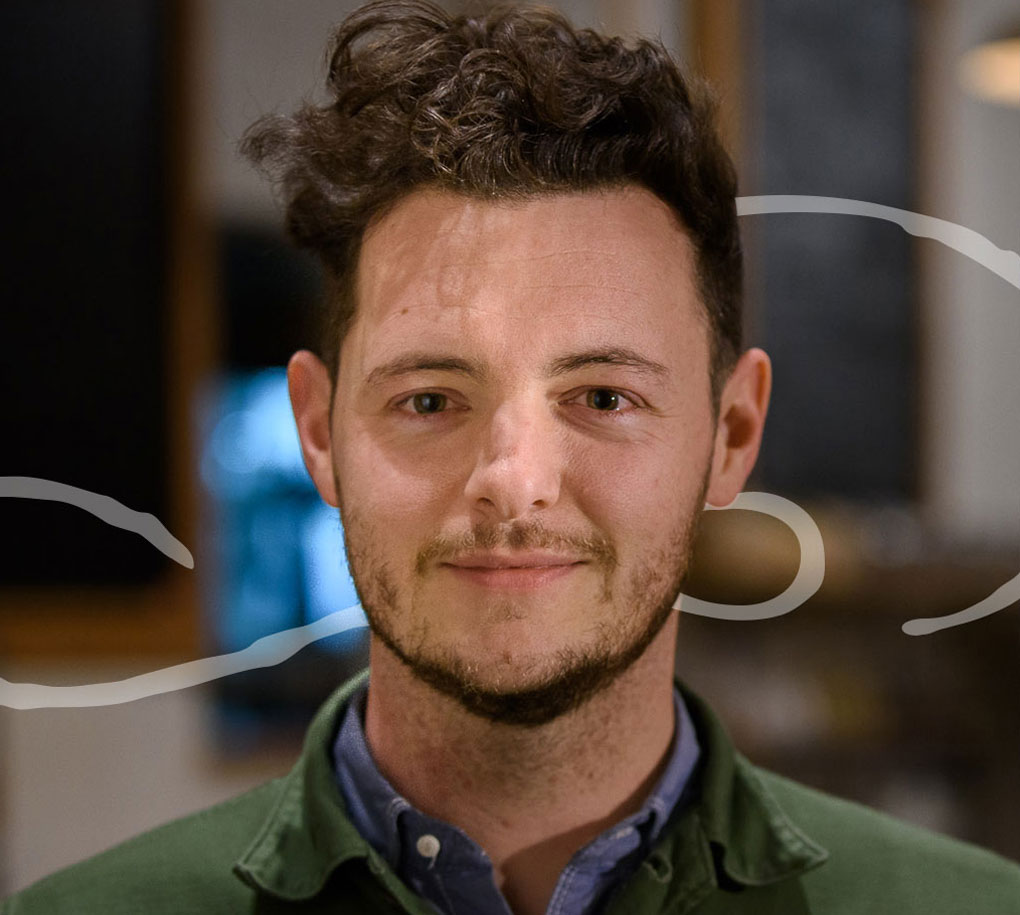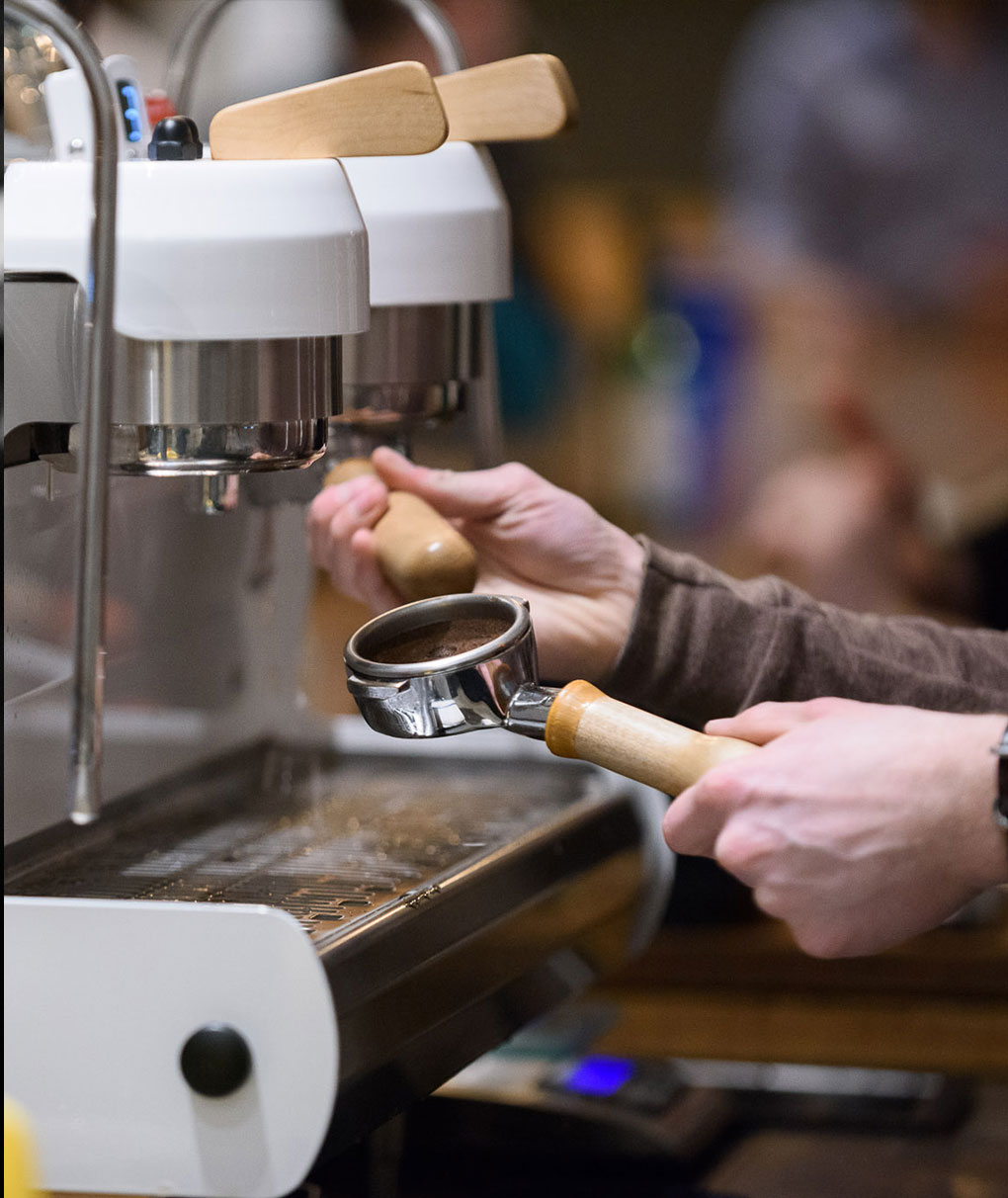
Common Grounds


On a frigid evening in January,
Farmer’s Daughter still has its lights on. Usually, the Northshore restaurant locks up after lunch, but not tonight. In fact, there’s a good crowd growing, and they’re gathered around the bar, blue solo cups in hand, talking among and over one another.
There’s plenty of beer, and yes, you could call it a happy hour, but not in the conventional sense: the bar belongs to Copacetic Coffee, an artisan coffee shop within the restaurant, and everyone is here for a “latte art throwdown.” If you haven’t heard of it, you’re not alone — but you might be missing out.
“A latte art throwdown is pretty much what it sounds like,” says Scott Porbansky, a co-founder of Copacetic.
“Latte art is about giving another person a drink that’s beautiful. And the throwdown makes things a little more interesting.”
For the uninitiated, latte art is the flowers and hearts and doodles floating in the foam at the top of your mug or to-go cup. For a while, it was an impressive surprise from expert baristas; now, it’s still impressive but standard fare, especially in a city like Chattanooga that seems to have a high number per capita of independent cafes and hole-in-the-wall coffee shops.
Latte art throwdowns are a trend of the trend — a friendly tournament where judges score competing baristas, based solely on aesthetics, as they free-pour. They’re happening everywhere, but in Chattanooga, it’s less competition and more celebration of the coffee community that’s rapidly growing, yet still kind of new.
“We enjoy finding ways to come together like this because there’s a lot of collaboration in our space,” Scott says. “We all operate our own shops, but we’re really doing different takes on the same thing. The shared goal is to propel the coffee culture forward.”

They’ve made a lot of headway in a short amount of time simply by establishing themselves here. In just the past few years: Copacetic debuted within Farmer’s Daughter, and the two have since merged; Brash Coffee successfully opened its doors in the thriving Warehouse Row building; Camp House outgrew its space on the Southside and became a downtown mainstay; and after putting down roots on Main Street, Velo Coffee Roasters is already considering expansion outside the city. Of course, these are in addition to other well-loved spots that have been here for decades, like Rembrandt’s, Stone Cup and Greyfriar’s.
“We’ve grown a lot, but we’re obviously not the largest market,” says Andrew Gage, the founder of Velo. “And in some ways, we’re a little behind what’s happening on the national scene. But where the big cities are so competitive, and everyone is rushing to do the next greatest thing, we have the luxury of being very thoughtful about what we present to the market. That’s a good thing.”
Each shop carries a torch: Brash, for example, prides itself on direct trade with its farmers, while Camp House focuses on seasonal variety. But every stakeholder in this community is a coffee lover first. Not because of what they get out of it — be it the taste or the buzz or the early morning ritual — but because of everything that goes into it.
And a lot goes into it. Just as wine starts with a grape seed, and beer starts with a grain of barley, our morning mugs have a story that starts in the soil and only comes to fruition with great effort and careful discretion along the way. Every choice and every tweak of a technique results in something entirely unique. So it’s not just coffee in a cup; it’s a little symphony of decisions that never played together exactly the same way before, and never will again.

“In this industry, there’s so much room to stretch yourself and experiment,” Andrew says. “For years, no one was pushing that agenda here, but it’s happening now.”

For the resident roasters and baristas, this is an exciting time. Their niche doesn’t feel so niche-y anymore — which for them, is a wonderful thing. The broader community is not just receptive, but incredibly responsive to their recent efforts. And that was a concern, for a while: the get-what-you-pay-for aphorism rings true here, so the changes have come with a price tag.
”There’s an endless amount of knowledge to be learned, and especially in roasting, there’s an opportunity to do research and gain experience, then present it to the community at large,” Andrew says. “But it’s not like we’re out there lecturing everybody. We’re pushing a conversation forward in a very dynamic market, so people understand why we do what we do and why it costs more. And they embrace it.”
It helps that there’s identifiable authenticity. Case in point: in February, Andrew trekked to Guatemala, where he spent eight days meeting with growers. He’s not the first of his Chattanooga counterparts to cultivate global relationships — and he won’t be the last — in pursuit of quality coffee and transparency, from ground to cup.
